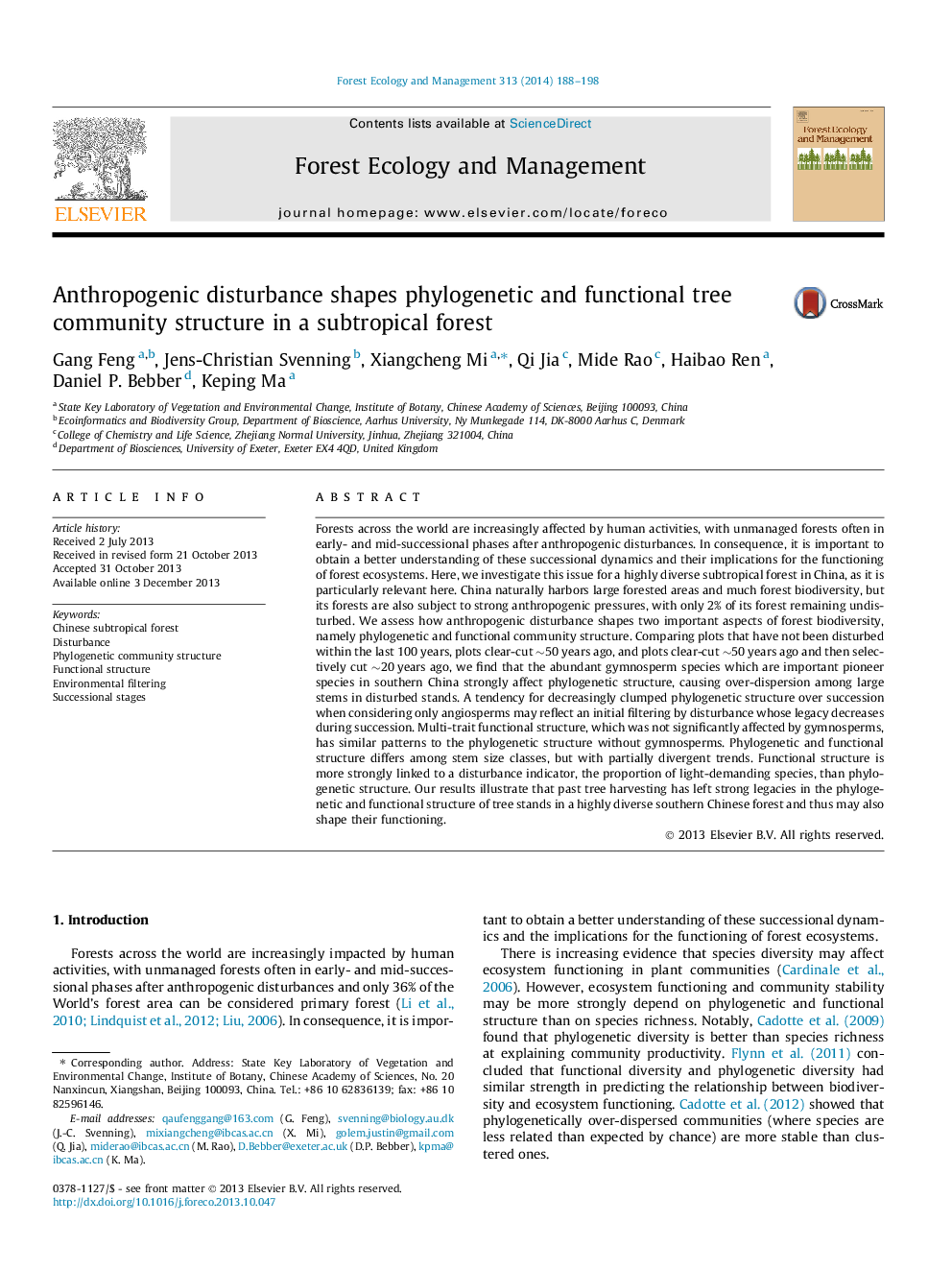| کد مقاله | کد نشریه | سال انتشار | مقاله انگلیسی | نسخه تمام متن |
|---|---|---|---|---|
| 86594 | 159199 | 2014 | 11 صفحه PDF | دانلود رایگان |
• Forest phylogenetic and functional structures along disturbance gradient are examined.
• Gymnosperms strongly affect phylogenetic structure instead of functional structure.
• Phylogenetic and functional clustering excluding gymnosperms declines over succession.
• Phylogenetic and functional structure differs among stem size classes.
• Functional structure is more strongly related to a disturbance indicator.
Forests across the world are increasingly affected by human activities, with unmanaged forests often in early- and mid-successional phases after anthropogenic disturbances. In consequence, it is important to obtain a better understanding of these successional dynamics and their implications for the functioning of forest ecosystems. Here, we investigate this issue for a highly diverse subtropical forest in China, as it is particularly relevant here. China naturally harbors large forested areas and much forest biodiversity, but its forests are also subject to strong anthropogenic pressures, with only 2% of its forest remaining undisturbed. We assess how anthropogenic disturbance shapes two important aspects of forest biodiversity, namely phylogenetic and functional community structure. Comparing plots that have not been disturbed within the last 100 years, plots clear-cut ∼50 years ago, and plots clear-cut ∼50 years ago and then selectively cut ∼20 years ago, we find that the abundant gymnosperm species which are important pioneer species in southern China strongly affect phylogenetic structure, causing over-dispersion among large stems in disturbed stands. A tendency for decreasingly clumped phylogenetic structure over succession when considering only angiosperms may reflect an initial filtering by disturbance whose legacy decreases during succession. Multi-trait functional structure, which was not significantly affected by gymnosperms, has similar patterns to the phylogenetic structure without gymnosperms. Phylogenetic and functional structure differs among stem size classes, but with partially divergent trends. Functional structure is more strongly linked to a disturbance indicator, the proportion of light-demanding species, than phylogenetic structure. Our results illustrate that past tree harvesting has left strong legacies in the phylogenetic and functional structure of tree stands in a highly diverse southern Chinese forest and thus may also shape their functioning.
Journal: Forest Ecology and Management - Volume 313, 1 February 2014, Pages 188–198
